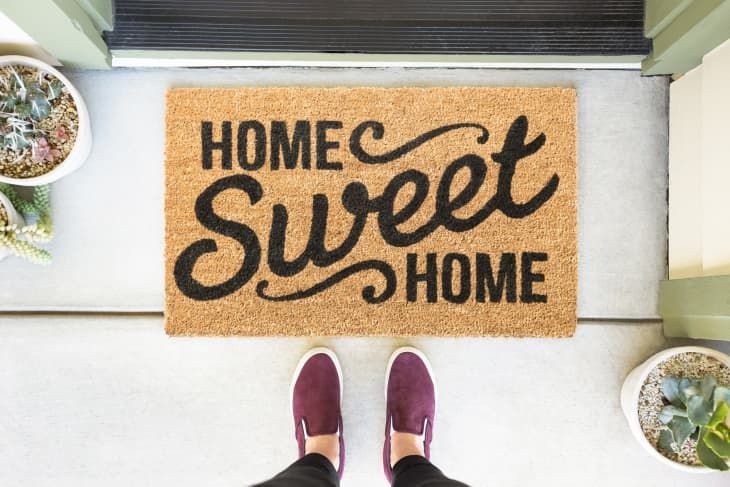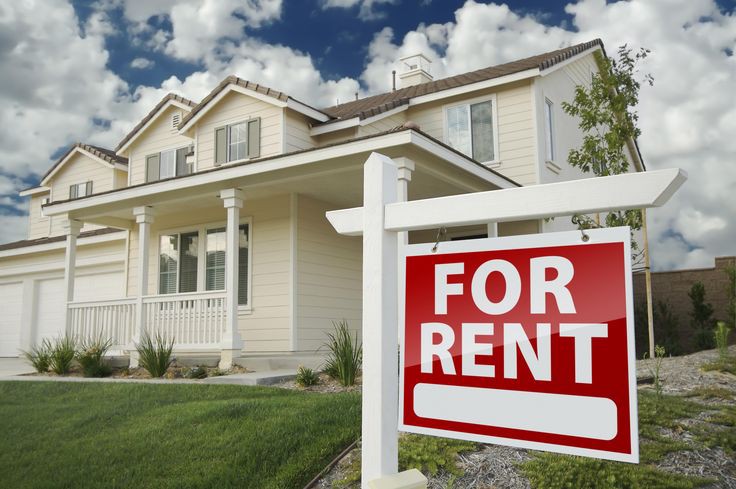Finding the right rental property can be a daunting task, especially with so many factors to consider. While the location and rent amount may seem like the top priorities, overlooking essential details can lead to unexpected issues later. A thorough inspection of the property and amenities can help tenants avoid disputes, hidden costs, or maintenance troubles. Whether you’re a student, working professional, or a family looking for a new home, knowing what to check during a property visit ensures a hassle-free renting experience. This guide outlines the key aspects prospective tenants should evaluate before signing a lease agreement.

What to look for in rental property viewings?
A rental property may seem perfect at first glance, but a detailed inspection is crucial to ensure it meets your needs. Evaluating key aspects like space, maintenance, and amenities can help you make an informed decision and avoid future inconveniences.
1. Space and layout
The size and layout of a rental property play a crucial role in determining comfort and functionality. Start by assessing whether the space meets your lifestyle needs—whether you’re a single professional, a family, or living with roommates. Check if the rooms are well-proportioned and allow for easy movement. Look for adequate ventilation, natural light, and cross-breeze, as these factors contribute to a comfortable living environment. Storage is another key aspect—inspect wardrobes, kitchen cabinets, and loft spaces to ensure they can accommodate your belongings. Also, consider the usability of common areas like the living room, dining space, and balconies. If you work from home, check if there’s enough space to set up a workstation. Lastly, ensure the layout provides privacy where needed, especially in shared accommodations.
2. Floors, walls and ceiling
A detailed inspection of the floors, walls, and ceiling can reveal potential maintenance issues that may not be obvious at first glance. Check for cracks, damp patches, peeling paint, or mold, as these could indicate water leakage or structural problems. Pay special attention to corners and areas near windows and doors, where moisture damage is more common. Ensure that the flooring is even and free from damage, especially in high-traffic areas like the kitchen and bathroom. If the property has wooden or tiled flooring, check for loose tiles, scratches, or signs of termite infestation. A well-maintained ceiling should be free from stains, cracks, or sagging, which could indicate plumbing or structural concerns.
3. Doors and windows
Doors and windows are essential for security, ventilation, and overall comfort in a rental property. Start by checking if all doors open and close smoothly without creaking or getting stuck. Inspect the locks, handles, and hinges to ensure they are sturdy and functional, especially for the main entrance and balcony doors. If the property has a wooden door, look for signs of termite damage or warping. For windows, confirm that they provide adequate natural light and airflow. Check for broken or loose latches, cracks in the glass, and any gaps that might allow dust, noise, or insects to enter. If the property is on a higher floor, ensure the windows have proper safety grills. Also, verify if mosquito nets or mesh screens are installed, as these can be useful in preventing pest problems.
4. HVAC system
A well-functioning HVAC system is essential for maintaining a comfortable indoor environment, especially in India’s varying climate. If the property has air conditioners or ceiling fans, check if they are in working condition, making sure there are no unusual noises, weak airflow, or leakage issues. Inspect ventilation in key areas like the kitchen and bathrooms to prevent mold and moisture buildup. For homes with centralised cooling or heating systems, ask about maintenance schedules and energy efficiency to avoid high electricity bills. If air conditioning is not provided, ensure there are sufficient electrical points to install one if needed. Proper airflow, exhaust fans, and insulation can make a significant difference in keeping the home comfortable throughout the year.
5. Plumbing
A thorough check of the plumbing system can prevent future inconveniences like leaks, water shortages, or drainage issues. Start by turning on all taps in the kitchen, bathrooms, and utility areas to check water pressure and flow. Inspect for leaks under sinks, around pipes, and near faucets, as even small drips can lead to water damage over time. Check if the bathrooms have a functioning geyser, and verify the drainage speed in sinks, showers, and toilets to ensure there are no blockages. Flush the toilets to confirm proper working conditions and look for signs of water leakage around the base. If the property has a water purifier, ensure it is in working order. Additionally, ask about the water supply schedule—whether it is available 24/7 or comes at specific times—to avoid water shortages.
6. Electricity supply and wiring
A stable electricity supply is crucial for a hassle-free living experience. Start by checking the main electrical panel to ensure it is well-labeled and in good condition. Test all switches, sockets, and lights to confirm they are working properly. Look for any exposed or damaged wiring, as faulty electrical connections can be a safety hazard. Verify the power backup options, such as inverters or generators, especially in areas prone to frequent power cuts. Check if the property has sufficient plug points for appliances like refrigerators, washing machines, and air conditioners. Additionally, ask about the average electricity bill to get an idea of monthly expenses. If the property has a prepaid electricity meter, understand how recharges work and whether any pending dues need to be cleared.
7. Fixtures and appliances
If the rental property includes fixtures and appliances, inspect them carefully to ensure they are in good working condition. Check ceiling fans, light fixtures, and exhaust fans to confirm they operate without noise or flickering. Test kitchen appliances such as the stove, chimney, and microwave (if provided) to ensure they function properly. In bathrooms, verify that the geyser heats water efficiently and does not leak. If the property has built-in wardrobes, cabinets, or shelves, check for any loose hinges, broken handles, or termite damage. Inspect air conditioners for cooling efficiency and listen for any unusual sounds. If the landlord provides a washing machine or refrigerator, run a quick check to ensure they are clean and operational. Asking about maintenance responsibilities beforehand can help avoid unexpected repair costs later.
8. Smoke detectors
Smoke detectors are essential for fire safety, but they are often overlooked in rental properties. Check if the property has functioning smoke detectors, especially in key areas like the kitchen, hallways, and bedrooms. If they are installed, test them to ensure they are responsive and have working batteries. If the property lacks smoke detectors, consider discussing with the landlord about installing them, particularly in high-risk areas. In apartments, inquire about fire safety measures in the building, such as fire extinguishers, emergency exits, and sprinkler systems.
9. Parking
If you own a vehicle, checking the parking arrangements is crucial before finalizing a rental property. Confirm whether a designated parking space is available and whether it is covered or open. In apartment complexes, ask if parking is included in the rent or if there are additional charges. If the property is in a busy area, assess the availability of visitor parking and security measures like CCTV surveillance or gated entry. For tenants with two-wheelers, ensure there is a safe and accessible space for parking. If street parking is the only option, check for restrictions, safety concerns, and the availability of parking at different times of the day. Clarifying these details in advance can help avoid disputes or inconveniences later.
10. Location and neighbourhood
The location of a rental property significantly impacts convenience, safety, and overall quality of life. Start by exploring the neighbourhood to assess its cleanliness, noise levels, and general atmosphere. Check the distance to essential facilities such as grocery stores, hospitals, schools, public transport, and your workplace. If you rely on public transport, ensure that bus stops, metro stations, or auto-rickshaw stands are easily accessible. Safety is another crucial factor—observe the lighting in streets and common areas, and inquire about crime rates in the locality. If it’s a gated community, check for security measures like CCTV cameras, guards, and entry restrictions. Additionally, consider the social environment—whether the neighbourhood aligns with your lifestyle, family needs, and preferences.

Housing.com POV
Viewing a rental property is more than just checking its appearance—it’s about ensuring it meets your lifestyle, safety, and comfort needs. Carefully inspecting aspects like space, maintenance, plumbing, wiring, and neighborhood conditions can help you make an informed decision and avoid future hassles. Always clarify rental terms with the landlord and address any concerns before signing the lease. By being thorough during property viewings, you can secure a home that suits your requirements and enjoy a stress-free renting experience.
FAQs
What should I check first when viewing a rental property?
Start by assessing the overall space, layout, and ventilation. Then, inspect essential aspects like plumbing, electricity, doors and windows, and fixtures. Also, check the neighborhood and security measures to ensure the property meets your needs.
How can I check for plumbing issues in a rental home?
Turn on taps to check water pressure, look for leaks under sinks, and ensure proper drainage in sinks, showers, and toilets. Also, ask about the water supply schedule to avoid any unexpected shortages.
Why is it important to check the wiring and electricity supply?
Faulty wiring or insufficient plug points can cause safety hazards and inconvenience. Test switches, sockets, and power backup systems. Also, ask about electricity bills and whether the property has a prepaid or postpaid meter.
What should I consider when checking the neighborhood?
Look for essential amenities like grocery stores, hospitals, and public transport. Check safety measures, crime rates, and noise levels. If you have children, consider proximity to schools and parks for added convenience.
Is it necessary to check appliances and fixtures before moving in?
Yes, testing appliances like geysers, air conditioners, and kitchen equipment ensures they are functional. Also, inspect light fixtures, fans, and wardrobes for damages. If repairs are needed, discuss with the landlord before signing the lease.
| Got any questions or point of view on our article? We would love to hear from you. Write to our Editor-in-Chief Jhumur Ghosh at jhumur.ghosh1@housing.com |







